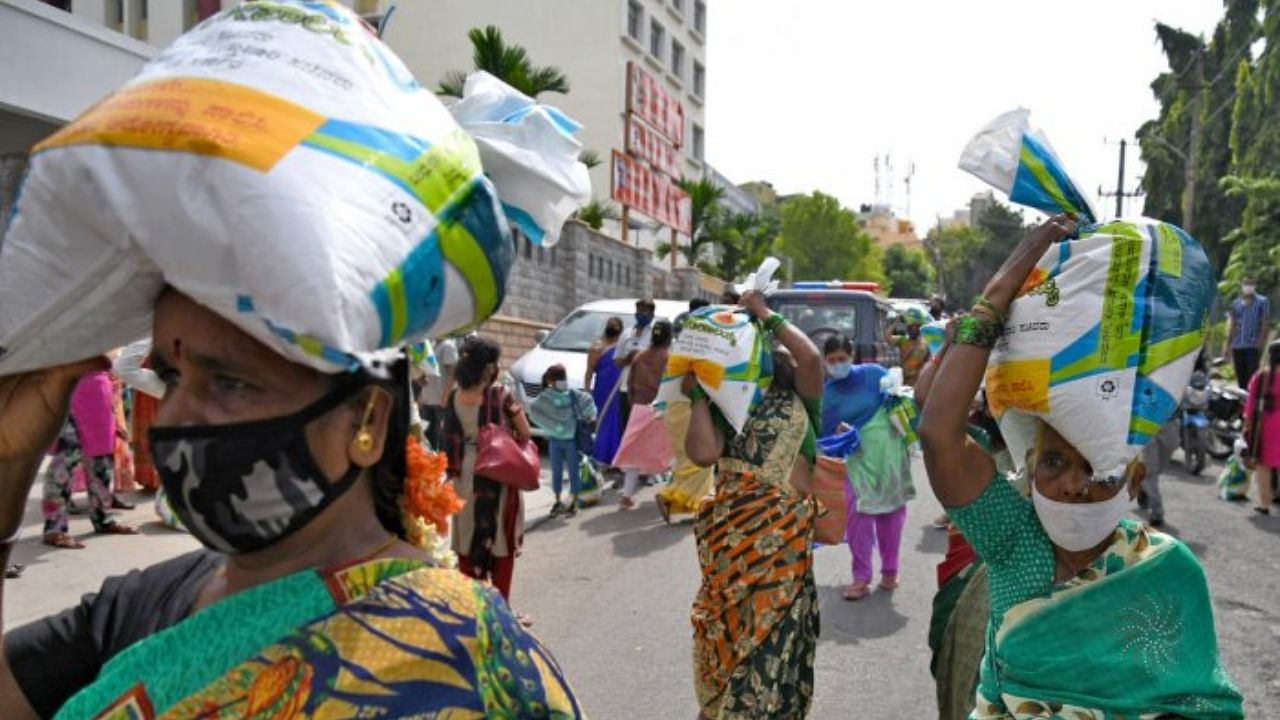
The politics of ‘freebies’ has created quite a commotion in political circles and courtrooms. However, the point here is to de-centre the debate to a key question: How does government welfare spending affect inequality? 'Freebie' or ‘revadi’ is deprecatory and it delinks the relationship between welfare and the democratic state. It speaks of the anxieties of ‘bringing the state back in’ amidst the precarity of global capitalism.
The expansion of social welfare programmes has been a prominent feature of advanced industrial societies. The equity dimension of institutional programmes based on a universalistic strategy intended to effect greater redistribution and combat poverty is familiar. For example, Escola (Bolsa Familia) in Brazil, Oportunidades in Mexico or Red de Protection Social in Nicaragua seek to balance current and future poverty reduction through cash transfers with financing immediate consumption and developing human capital. Even mature democracies in Europe have incorporated broad-based, price-suppressing social spending measures, including subsidies, tax cuts and price controls as part of equity-enhancing reforms.
The social tariff regimes in European countries have targeted low-income households to benefit from concessions in public utility services such as energy, sanitation and water -- funded by taxation or through the subsidy cost borne by better-off billpayers. Internationally, to safeguard consumers from soaring energy prices, there are policies either of exemption from flat-rate tariffs or reduction in variable tariffs or a combination of both. Principle 20 of the European Pillar of Social Rights affirms that everyone should have “the right to access essential services of good quality, including water, sanitation, energy, transport, financial services and digital communications”. Such adoption of policies is not new; these are ways to make essential services accessible to those in need. In Portugal, the system is that of assistance with energy costs, consisting of gas and electricity social tariffs, and of extraordinary social support to energy consumers.
A combination of such equalising strategies that accrue economic benefits is found in the flagship programmes of the ‘Aam Aadmi’ welfare model of Kejriwal in Delhi and Punjab. Its uniqueness lies in its indigeneity, adapting such universal programmes of social tariffs in India. Paradoxically, its inbuilt subsidising of public utilities and conditional cash transfer programmes in the form of free electricity, free water, free public transportation for women, free health and allowances to womenhastriggered a nationwide debateon its trade-offs and adverse effect on the economy. When welfare spending is aimed at poverty alleviation, it can hardly be detrimental to nation-building or economic growth. The complexity of the fiscal deficit cannot be solely attributed to welfare spending.
The distributional impact of government welfare spending is far more impressive than the political cost of electoral promises. The use-based proportional electricity-subsidy scheme of Delhi government is progressive on many counts, but its sheer net of benefit is jaw-dropping. The Power Department under the Government of Delhi has subsidised 100% of the energy charges for domestic consumers using up to 200 units per month and 50% of the charges up to 400 units per month. This has benefitted more than 5 million consumers, or 77% of the total domestic category of electricity consumers. The AAP government has been successful in reducing the power bills to the domestic sector through subsidization up to 50% for consumption of electricity below 400 kWh (kilowatt hours) since 2019-20. The altruism in the introduction of voluntary abdication of free electricity scheme is a viable bid to equalise the budget encumbrances.
Higher energy costs mean a greater burden on low-income households because a large part of their income goes into buying electricity and gas. Making uninterrupted power supply accessible to the poor households has a multiplier effect for development outcomes, including health, education and living standards generally. The provision of adequate and affordable electricity contributes to the country’s long-term development strategy.
Why should such policies cause a bellyache for the Centre when states that are fiscally capable and have long-term debt sustainability plans can afford them? And for fiscally deficient states, it remains legitimate if welfare spending under the garb of freebies can expand the public-utility net of the poor and the vulnerable. Co-operative federalism can push to restructure fiscal cross-spending between the states and the Centre to strengthen the ability of states to be able to afford such schemes.
The AAP’s welfare model in two states is indeed a homegrown variation of global experiments. The popularity of AAP governance shows that the transition of the Indian State from interventionism to welfare will depend on new forms of politics that seek to democratise development practices. The political agendas of the State have to be reinvented to align welfare with the agenda of the poor and the marginalised.
(The writer is Associate Professor, Kalindi College, University of Delhi)